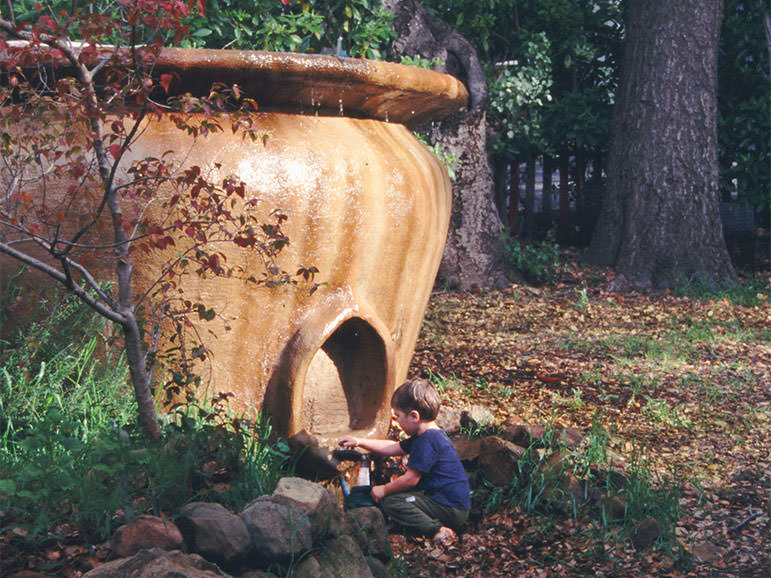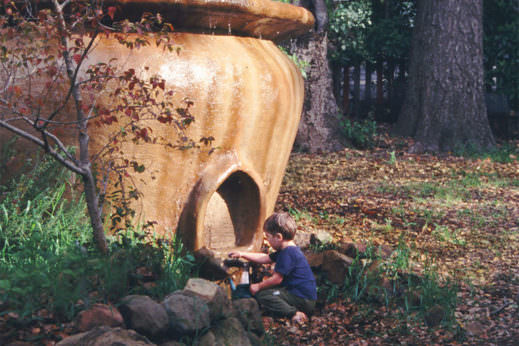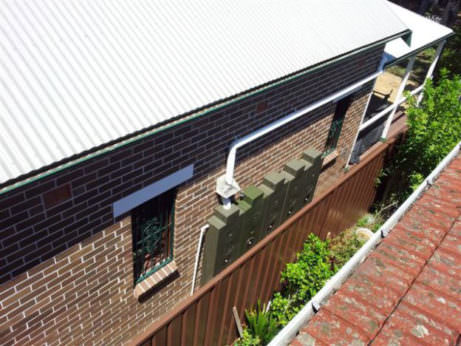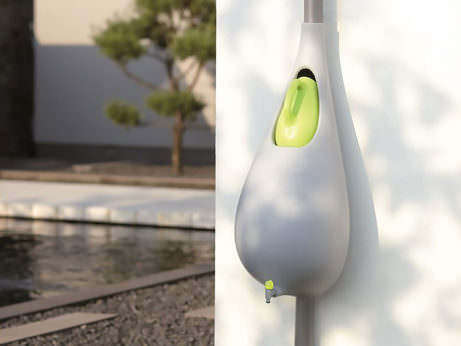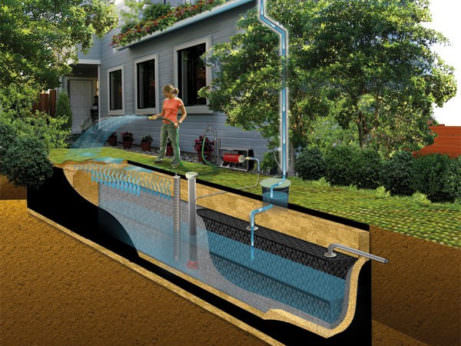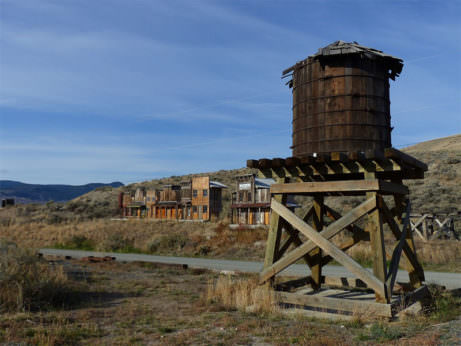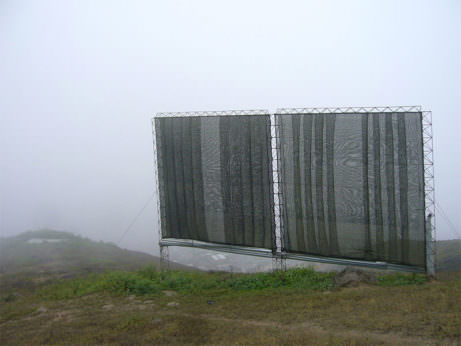Not only are these rainwater collectors useful, but they are unique and interesting to look at. Because they’re all different, you can find one that fits well on your own property. Soon, you’ll love when it rains because that means more water collected!
Artful Ferrocement Tanks
In other parts of the world, ferrocement—a construction technique involving concrete reinforced with metal mesh—is quite common. The beauty of this approach is that almost any shape is possible and the exterior can be sculpted, textured and colored as you like.
The materials for this approach cost significantly less than buying a pre-fab tank, though it takes a fair bit of expertise to build a ferrocement tank that is structurally-sound and doesn’t leak. Local permaculture groups often offer workshops in ferrocement construction; the Ferrocement Educational Forum is a good place to connect.
Water Walls
A number of companies have developed slim-profile tanks—water walls—that can fit flat against the wall of your house, or even act as an attractive, free-standing landscape feature.
The most architecturally-attractive option available in the U.S. is arguably the Rainwater HOG, which is a system comprised of slim 50-gallon tanks designed to be stacked together like Legos. However, the most widely available option domestically is the Fat Boy water wall.
Tiny Tanks for Tiny Places
Dutch designer Bas van der Veer has invented something much more chic: the Raindrop, a tear-dropped shape tank that slips directly onto a downspout and has a built-in watering can that you can grab whenever your plants are dry. The Raindrop holds 20 gallons, while it’s smaller cousin, the Raindrop Mini holds just one gallon.
The Invisible Rain Tank
Cisterns are big space-savers—put a patio, deck, or driveway over it if you like, or simply install it under the garden. Plastic cisterns, which look much like aboveground water tanks (but are designed to resist the weight of the soil around them) are readily available in a multitude of shapes and sizes.
Another approach is called modular underground storage—dig a rectangular hole, line it with a waterproof membrane, and stack it full of what are basically fancy milk crates that provide structural strength to prevent the soil from caving in on the sides.
Classic Wood Tanks
New wooden tanks are pricey: they typically cost $2 to $3 per gallon of capacity, while modern plastic tanks run about 50 cents per gallon. If your carpentry skills are up to par, consider building your own—there are plenty of plans available online. Vertical wooden planks are milled to fit together in a circular form, with heavy-duty metal straps to hold them together against the weight of the water.
Fog Catchers
People in arid but foggy climates have long devised structures that condense air moisture into water for drinking and irrigation.
For most of us, fog catchers are most suitable in places like San Francisco or the Rocky Mountains. Unfortunately, there are few off the shelf options available. One of the most promising is a tiny unit by IDEO, a Palo Alto design firm, that mounts outside your window and catches enough water on foggy mornings to water a few plants or brew a pot of coffee.
Have you considered collecting rainwater on your property? Which method would you use?
Article and Photo Source: Modern Farmer
